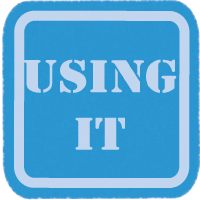
 Communicative Activities: What Counts as Speaking?
Communicative Activities: What Counts as Speaking?
As a language teacher it is important to know what counts as speaking in language learning and how to promote such skills. This section explores communicative activities, including challenges and benefits of their use, and the criteria for determining to what degree an activity is communicative. |
|
What are Communicative Activities?
Communicative activities include any activities that encourage and require a learner to speak with and listen to other learners, as well as with people in the program and community. Communicative activities have real purposes: to find information, break down barriers, talk about self, and learn about the culture. Even when a lesson is focused on developing reading or writing skills, communicative activities should be integrated into the lesson.
Furthermore, research on second language acquisition (SLA) suggests that more learning takes place when students are engaged in relevant tasks within a dynamic learning environment rather than in traditional teacher-led classes (Moss & Ross-Feldman, 2003).
How do I know to what degree an activity is communicative?
Many teachers make the mistake of thinking they are getting their learners to speak, when in fact, the learner is not.
Consider the following questions. Are students speaking when they are:
- Singing?
- Reciting a memorized text?
- Practicing pronunciation?
- Reading aloud?
- Describing an image?
- Answering questions spontaneously?
 |
Use the Criteria for Communicative Activities Checklist to rate to what degree the following activities are communicative. Simon Says, A scripted dialogue, Matching worksheet, Creation and Presentation of a Poster (culture themed) |
back to top
What are the benefits and challenges of using communicative activities?
| What are the benefits of using Communicative Activities? | What are some of the challenges of using Communicative activities? |
|
|

BICS & CALP Explained by Jim Cummins
http://www.iteachilearn.com/cummins/bicscalp.html
Communicative Language Teaching: An Introduction and Sample Activities http://www.cal.org/resources/digest/gallow01.htm
Communicative Language Teaching article
http://coe.sdsu.edu/eet/Articles/comlangteach/index.htm
The Advantages of Communicative Language Teaching
http://iteslj.org/Articles/Belchamber-CLT.html


 One of the big challenges that language teachers face is promoting oral language. Language teachers and learners alike often consider speaking the most difficult aspect of learning a language. In several of the case studies our teacher friends express the difficulties they have developing oral language. If we look at Anna for instance, we see that she is trying to plan a final task that promotes student speech. She has decided to allow them to use a script during the presentation to ease some anxiety; does this still mean the students are speaking?
One of the big challenges that language teachers face is promoting oral language. Language teachers and learners alike often consider speaking the most difficult aspect of learning a language. In several of the case studies our teacher friends express the difficulties they have developing oral language. If we look at Anna for instance, we see that she is trying to plan a final task that promotes student speech. She has decided to allow them to use a script during the presentation to ease some anxiety; does this still mean the students are speaking? 
